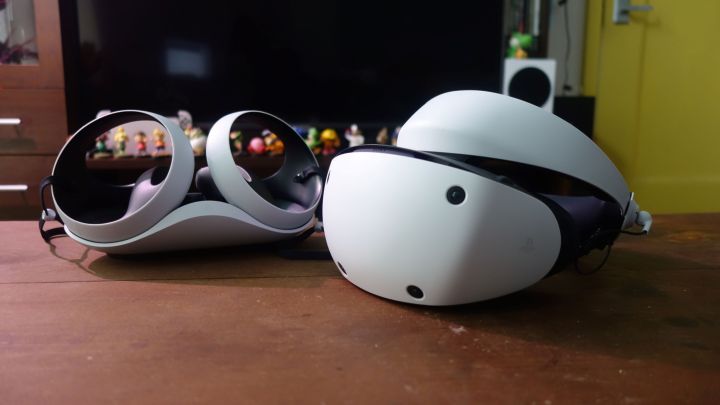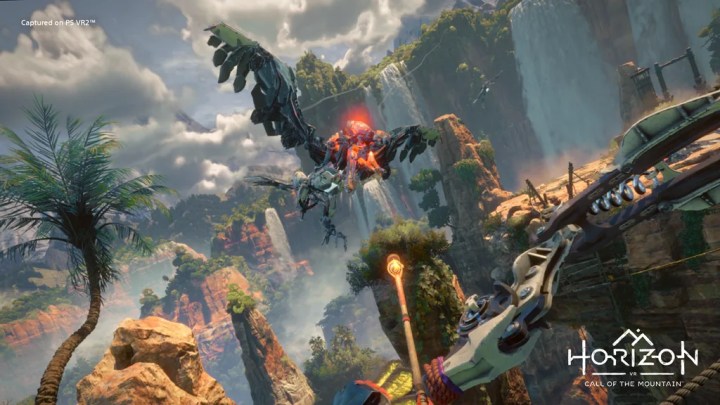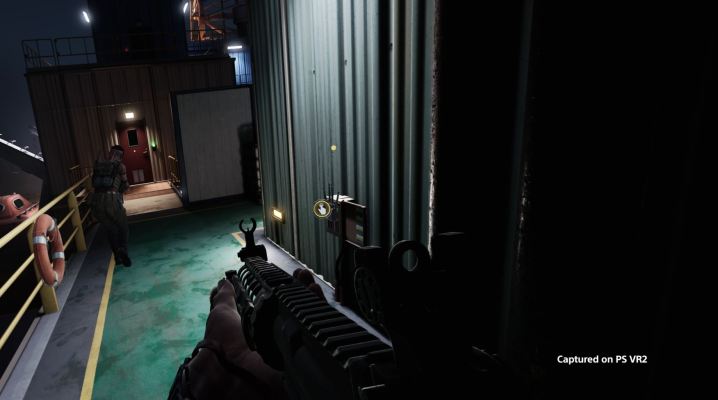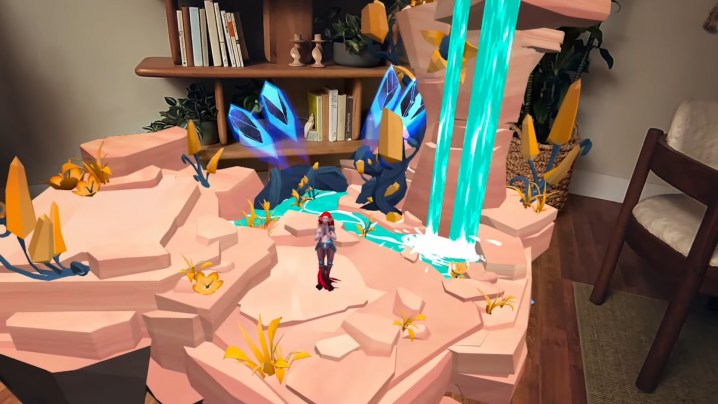
One year ago, I took my first step into virtual reality with the PlayStation VR2. One year later, I haven’t walked much further.
I spent a long time watching the VR sect of the gaming medium from the sidelines, curious about this new form of interaction, but never taking the full plunge. Impressed with the PSVR2’s specs and confident in Sony’s first-party capabilities, I bought it at launch in February 2022. After a week of use, I wrote that I “anticipate it’ll be a very supplemental gaming style for me in the future, not something I’ll want to do for hours every day.”
That’s a very generous reading of what ended up happening.
Following that article, my use of PlayStation VR2 became much spottier due to a dearth of content. I’d pick it up occasionally for work when new VR games like Crossfire: Sierra Squad or Arizona Sunshine 2 would come out. That would elicit a spurt of interest, but a lack of consistent additions to its lineup has left it sitting on my shelf most of the time. Now that I have a Meta Quest 3, I doubt I’ll be playing much more on it unless Sony can get its first-party support for it together.
PlayStation VR2, one year later
After a year of using PlayStation VR2, I’m disappointed in my $550 purchase. There was a honeymoon phase when it initially launched as I explored the headset’s launch lineup, all of which was new to me. It was a bit uncomfortable to use for long periods, and it lacked exclusives outside Horizon Call of the Mountain and VR modes for Resident Evil Village and Gran Turismo 7. I hoped this would improve over time as I got used to wearing it and more games started to come out.

Regarding comfort, I’m getting less nauseous playing VR games now than I was a year ago. That’s an aspect of the VR experience that does improve with time. Unfortunately, I still don’t find the headset itself comfortable. I mess around with it a lot each time I put it on, but after 30 minutes, it always starts to hurt my nose and forehead. I might be willing to fight through the pain if the games were good enough to justify it, but they haven’t been.
The most woeful aspect of PSVR2 one year later is the lack of first-party support. Last year, it only got two new Sony-published games: Horizon Call of the Mountain and Firewall Ultra. The former was a great introductory experience, but the latter was a buggy multiplayer shooter that left a bad taste in my mouth. Horror exclusives like The Dark Pictures: Switchback and Resident Evil 4 VR aren’t my cup of tea, and outside of that, I only had a solid Before Your Eyes VR conversion and the entertaining, but extremely repetitive Synapse.
I enjoyed some other VR experiences throughout that time, like Rez Infinite, but overall, the headset’s 2023 game lineup didn’t do enough to elicit continued interest from me. My headset became a novelty to put on every few months, not a permanent addition to my gaming rotation. The situation didn’t seem so hot for developers making games for PSVR2 either.

First Contact Entertainment, the studio behind the Sony-published Firewall Ultra, shut down in December 2023. “After almost 8 years of working with the most amazing team I’ve ever had the pleasure of being part of, I’m sad to announce that we will be closing our company First Contact Entertainment by the end of the year. The lack of support for VR within the industry has eventually taken its toll. As a AAA VR game developer, we are just not able to justify the expense needed [going] forward,” the developer wrote on Facebook.
If that’s the sentiment from a Sony-backed developer, I’m not optimistic about year two of PSVR2 exclusive support.
PlayStation VR2 vs. Meta Quest 3
My opinion on PSVR2 shifted even further this year when I tried out the Meta Quest 3. After obtaining the headset with a copy of Asgard’s Wrath 2, my interest in VR reignited a bit as I once again entered the honeymoon phase with a new piece of hardware. While I wasn’t a fan of how often Meta asks for my data while using the thing, it’s a decidedly more comfortable headset than the PSVR2. It’s smaller, making it a bit easier to adjust on my large head. It also doesn’t feel like it’s pressing into my face as much, meaning my Meta Quest 3 play sessions have lasted longer.
I tried Journey to Foundation on both headsets for a head-to-head comparison. I did find that it looked a bit better on PlayStation VR2, so if performance and visual fidelity are what you mainly care about with VR, Sony’s headset still has that going for it. That said, VR games generally look a bit dated visually, so I didn’t mind the slight visual downgrades Journey to Foundation received on Meta Quest 3.
Horizon Call of the Mountain is missed, but Meta Quest 3’s game library feels much more impressive than the PSVR2’s. When it comes to traditional games, I enjoyed Out of Scale: A Kurzgesagt Adventure, but what impressed me the most were mixed reality experiences. I’ve had a blast with Pillow, a minigame collection you can play lying down, and Demeter, a Moss-like platformer where the stages are laid out in your own room. VR is at its best when it’s playing with perspective, not when it’s showing you yet another way to reload a gun.

Considering all the buzz the Apple Vision Pro has been getting, mixed reality and spatial games will likely become the new hotness for VR headsets. That’s something PSVR2 is just not equipped for, and the system doesn’t currently have enough exclusives or first-party support to put much faith in Sony’s more old-school VR approach. Right now, the only PSVR2 exclusive on the horizon is the flight combat game Aces of Thunder, which is lackluster heading into year two of the platform’s life span. Sony has a lot of work to do if it wants to reinvigorate my interest in its VR offerings or it needs to admit its lack of plans for support outright.
The Meta Quest 3 is a cheaper, more comfortable headset. It has a vast library of games and other VR and MR content, and I have more confidence in Meta’s first-party support. Even then, I’m still not playing with it nearly as much as I play my on PC, PlayStation 5, Xbox, or Nintendo Switch. My assessment that VR would stay a supplemental gaming experience for my last year was accurate. I’m just more disappointed now that I understand just how niche the use case for the PSVR2 is within my own VR usage, just one year after launch.
Editors’ Recommendations

